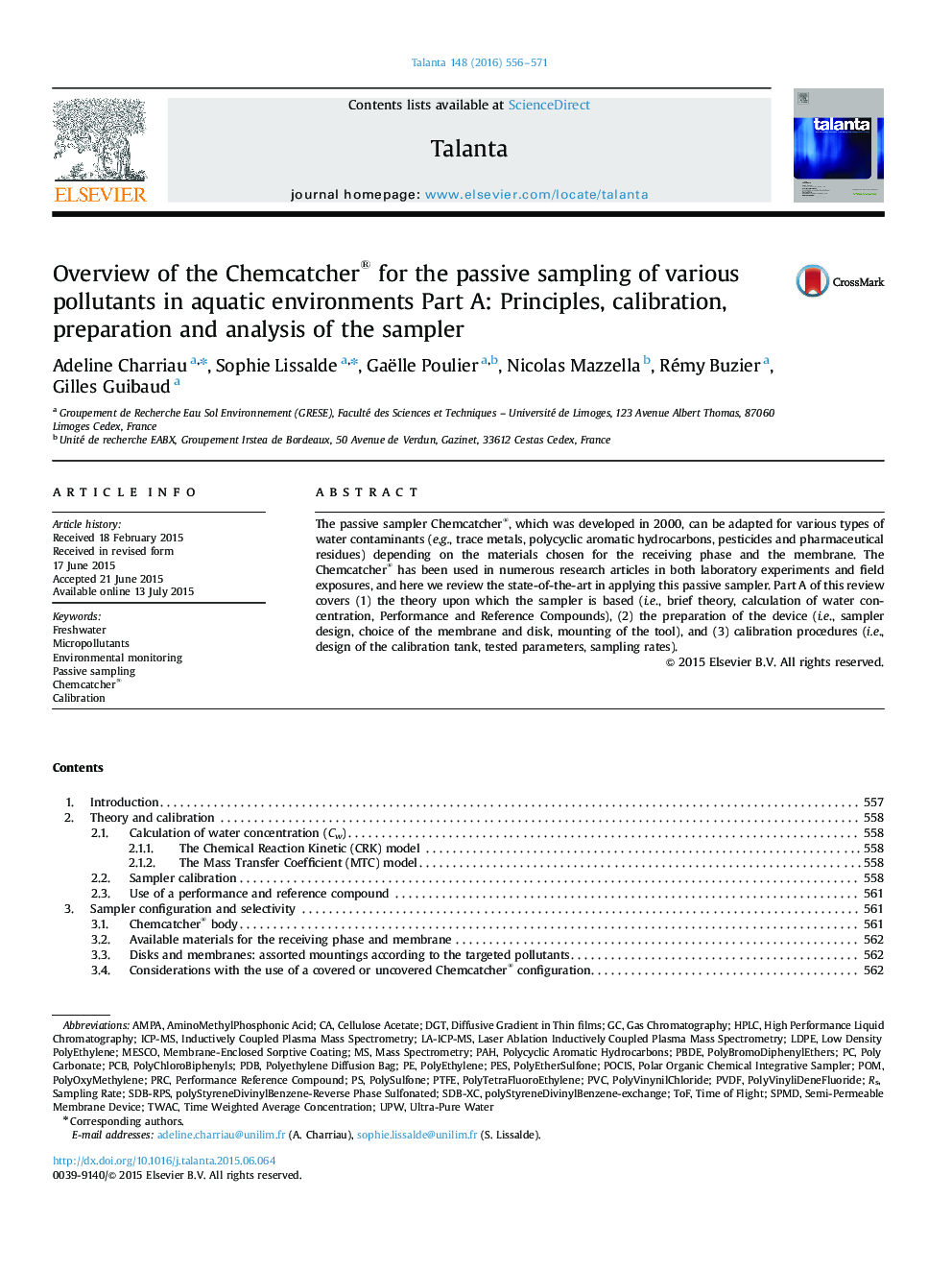| Article ID | Journal | Published Year | Pages | File Type |
|---|---|---|---|---|
| 1243820 | Talanta | 2016 | 16 Pages |
•State-of-the-art of the application fields of the Chemcatcher® passive sampler.•Calibration procedures (e.g. exposure design, controlled parameters, and Rs calculation).•Preparation and analysis procedures (e.g. conditioning, storage, and analysis steps).•Excel database of sampling rates obtained by previous authors.•Versatility of the Chemcatcher® depending on applied materials.
The passive sampler Chemcatcher®, which was developed in 2000, can be adapted for various types of water contaminants (e.g., trace metals, polycyclic aromatic hydrocarbons, pesticides and pharmaceutical residues) depending on the materials chosen for the receiving phase and the membrane. The Chemcatcher® has been used in numerous research articles in both laboratory experiments and field exposures, and here we review the state-of-the-art in applying this passive sampler. Part A of this review covers (1) the theory upon which the sampler is based (i.e., brief theory, calculation of water concentration, Performance and Reference Compounds), (2) the preparation of the device (i.e., sampler design, choice of the membrane and disk, mounting of the tool), and (3) calibration procedures (i.e., design of the calibration tank, tested parameters, sampling rates).
Graphical abstractFigure optionsDownload full-size imageDownload as PowerPoint slide
